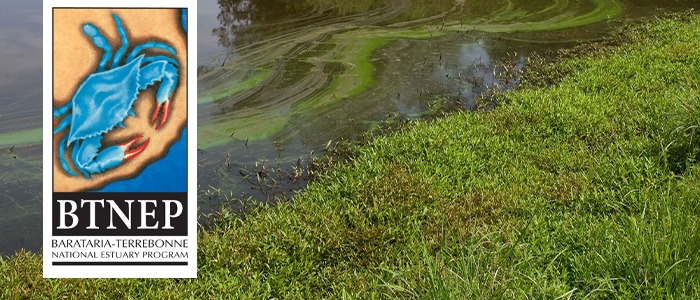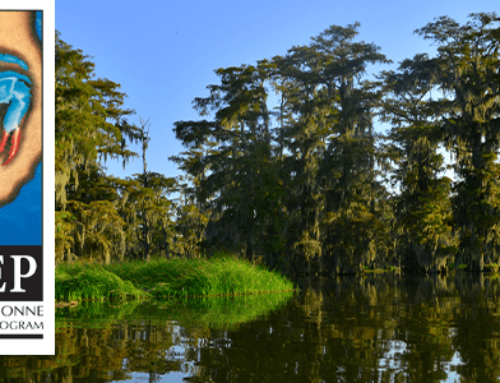
The Algae Bloom Boom
Sources, safety, and how you can help
With beaches, rivers, and lakes across the United States being affected by massive algae blooms, you may be wondering what the causes are, and what you can do to help restore beauty and safety to our water bodies. Harmful algae blooms affect all 50 states, and while not all algae is toxic, even non-toxic algae blooms can have an ill-effect on the environment, people, and the local economy.
Algae can sometimes get a bad reputation, but not all algae is bad for the environment. According to The American Heritage Science Dictionary, algae is “any of various green, red, or brown organisms that grow mostly in water, ranging in size from single cells to large spreading seaweeds. Like plants, algae manufacture their own food through photosynthesis and release large amounts of oxygen into the atmosphere. They also fix large amounts of carbon, which would otherwise exist in the atmosphere as carbon dioxide.”
Issues arise when water bodies become inundated with an overgrowth of algae, known as an algae bloom. An overgrowth of algae typically occurs in our waterways during summer months when we have more sunlight and warmer temperatures, which creates an ideal growing environment for the algae. Slow moving water also adds to the problem, allowing the algae to grow without lots of disturbance, but a large portion of the issue at hand is nutrient pollution.
Nutrients, in proper quantities, are absolutely essential to life on Earth. Nutrient rich soil produces healthy fruits, vegetables, and grains, which provides humans and wildlife with proper nutrition. However, an overabundance of nutrients can have a negative effect on the environment.
An excess of nutrients in water, is referred to as nutrient pollution. Most often, nutrient pollution is caused by an overabundance of nitrogen and phosphorus. When these nutrients are present in excess, they cause an overgrowth of algae that is out of balance with the ecosystem. The combination of excess nutrients, sunlight, and high temperatures can mean rapid growth for algae. When algae grows rapidly, they also die rapidly, and in large quantities. When the algae die, they are eaten by naturally occuring bacteria in the water. This depletes dissolved oxygen in the water that can lead to fish kills. But fish aren’t the only ones impacted, algae blooms can also have serious impacts on wildlife and humans, too.
Algae naturally produce certain toxins. At low levels, this isn’t a problem for humans or the ecosystem, but when an algae bloom occurs, many more toxins are produced. This can make humans sick if they drink contaminated water, eat affected fish or shellfish, or come in contact with the polluted water. These effects range from sore throat, nausea, vomiting, diarrhea, and liver damage. With long exposure, the toxins can lead to liver failure, sperm damage, and cancer. Because of these serious impacts, it’s very important to heed instructions from local officials to stay out of polluted waters.
Excess nutrients can also directly affect drinking water quality. Excess nitrogen in the form of nitrates from fertilizers can runoff into surface water or seep into groundwater and cause drinking water contamination. Nitrates can convert to nitrites in your body and can affect the way that your body transports oxygen. Young babies are especially vulnerable to high nitrates in drinking water.
How does the water become polluted?
While nutrient pollution can and does occur naturally, human impact has worsened the issue. The EPA identifies the following as sources of nutrient pollution:
Agriculture – animal manure and fertilizers
Stormwater – runoff from rooftops, sidewalks, and roads
Wastewater – broken or improperly functioning home sewage systems
Fossil Fuels – burning of fossil fuels for electric power generation
Home Use – fertilizers, yard, pet waste, and certain soaps, and detergents
According to the EPA, “More than 100,000 miles of rivers and streams, close to 2.5 million acres of lakes, reservoirs and ponds, and more than 800 square miles of bays and estuaries in the United States have poor water quality because of nitrogen and phosphorus pollution.” While the EPA is taking several approaches to lessen nutrient pollution, there are things that citizens can do to help.
How you can help
While algae blooms are a large scale issue, there are several small steps you can take at home to keep from worsening the issue:
Only fertilize when needed, and don’t over-fertilize
Avoid fertilizing before a big rain or on windy days to avoid spreading the fertilizers
Choose phosphate free soaps and detergents
Wait until your dishwasher or washing machine is full to run a load of dishes or clothing
Make sure your home sewage system is in proper working order
Minimize water waste by fixing leaky faucets, taking shorter showers, and choosing water-efficient appliances and shower heads
Use energy efficient tactics like unplugging unused electronics, raising your thermostat when you’re away from home, and choosing energy efficient light bulbs
Bayou Folse Home Sewage Assistance Program
If you live in the area between Thibodaux and Lockport on LA 1, or if you live along Bayou Blue, Highway 316, you might be eligible to get your home sewage system fixed. We will check your home sewage system for free. The best way to protect your family and the estuary is to fix your home sewage system. Call 985-665-1070 to see if you qualify for the Bayou Folse Home Sewage Assistance Program.




